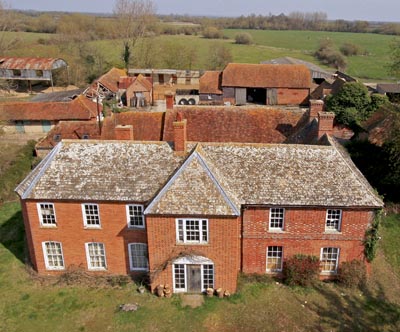Who can help to restore your historic house?
Some things are best left to the professionals. Country Life reveals its favourite experts in the heritage sector


The purchaser who exchanged contracts on Stanford Park Farm in Stanford in the Vale, Oxfordshire, at the end of last month has a large project on his hands. The ring-fenced residential farm of 240 acres just outside Wantage with its Grade II-listed Georgian farmhouse and extensive range of modern and traditional farm buildings requires complete refurbishment.
‘It had huge interest as it appeared to be such good value at a guide of £2.2 million, but we had a high fall-out rate once people starting digging and discovered what the restoration costs might be,' explains Richard Binning of Savills (01865 269168). After the interested parties were whittled down to 12, it went to sealed bids and sold to a local buyer.
A buildings survey, given to each prospective buyer, suggested that the basic spec costs would run to £1 million even before their imaginations started to get to work, but, points out Jonathan Bramwell of The Buying Solution (01608 690780), the buyer had one quirk of the VAT law on his side: if you can prove that a house has been unoccupied for two years, you're in a position to pay the reduced rate of 5% VAT on all the capital spend on renovations. ‘With probate sales such as this one, this condition can become very interesting,' he explains.

The market for large country houses that require extensive work has suffered in the past few years. ‘Before the crash, this kind of project to take on an unimproved property was the absolute dream, but, nowadays, buyers are more inclined to buy something that has already been done properly where you can easily gauge what the additional spend might be,' comments Mr Binning.
‘And, don't forget, although once you were able to make alterations to listed buildings without paying any VAT, that bonus was removed in 2012,' adds Dawn Carritt of Jackson-Stops & Staff (020-7664 6646). ‘This makes it even more onerous for buyers who want to tackle this kind of project.'
* Give Country Life for Christmas and save up to 40% on a subscription
Sean McGinness of The VAT Consultancy (01962 735350) says the ‘Empty Homes Condition' isn't well known about in the industry. ‘We're increasingly advising clients about this. It can be particularly beneficial, for example, when a probate sale arises and the children inheriting the property want to refurbish it and sell it on. It can, however, apply in any scenario where a residential property has been empty for two years,' he explains.
Sign up for the Country Life Newsletter
Exquisite houses, the beauty of Nature, and how to get the most from your life, straight to your inbox.
‘It's also worth noting that, if you buy a property that you can prove has already been empty for two years, you can move in and still pay 5% VAT on qualifying works. However, all of the construction work needs to take place within a year of the date the property was acquired.'
Obviously, this isn't a solution that will fit everyone's needs. ‘For the majority of people taking on restoration projects, they've either got to be able to rent a house while the work is going on or live in the existing house and embrace the chaos-both of which could outweigh the savings you might make on VAT,' adds Miss Carritt. However, argues Mr Bramwell, ‘when you're talking about taking on a project that will cost £5 million, it's worth waiting those extra few months before starting if it instantly saves £750,000. In this instance, the best plan is to concentrate on doing up a cottage to live in first and then waiting for the clock to tick.'
Country Life is unlike any other magazine: the only glossy weekly on the newsstand and the only magazine that has been guest-edited by HRH The King not once, but twice. It is a celebration of modern rural life and all its diverse joys and pleasures — that was first published in Queen Victoria's Diamond Jubilee year. Our eclectic mixture of witty and informative content — from the most up-to-date property news and commentary and a coveted glimpse inside some of the UK's best houses and gardens, to gardening, the arts and interior design, written by experts in their field — still cannot be found in print or online, anywhere else.
-
 Six rural properties with space, charm and endless views, as seen in Country Life
Six rural properties with space, charm and endless views, as seen in Country LifeWe take a look at some of the best houses to come to the market via Country Life in the past week.
By Toby Keel
-
 Exploring the countryside is essential for our wellbeing, but Right to Roam is going backwards
Exploring the countryside is essential for our wellbeing, but Right to Roam is going backwardsCampaigners in England often point to Scotland as an example of how brilliantly Right to Roam works, but it's not all it's cracked up to be, says Patrick Galbraith.
By Patrick Galbraith